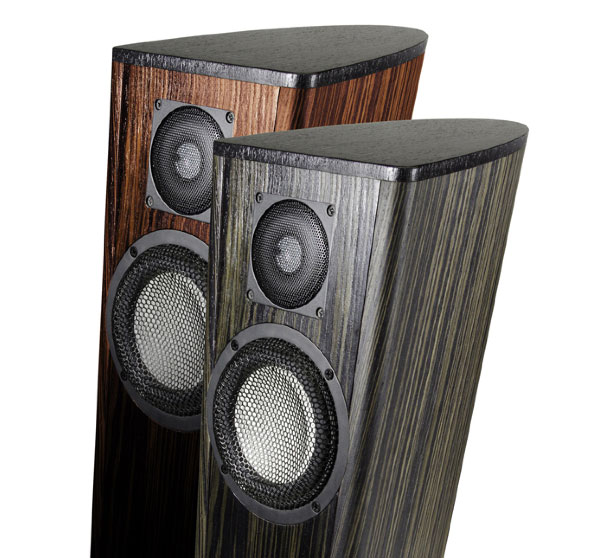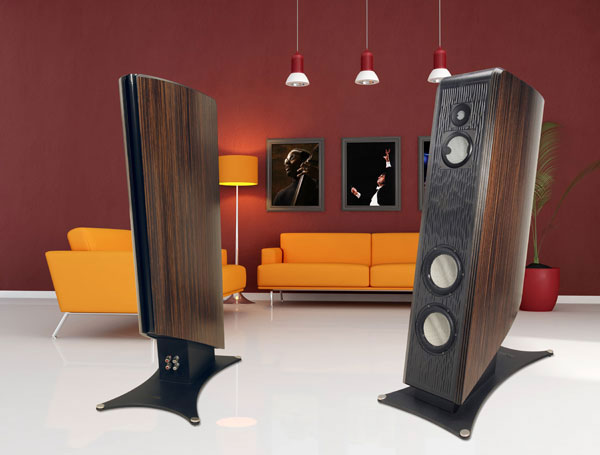Albedo Helmholine Speakers

"Albedo" is defined as the ratio of reflected light to incident light on an object, often a celestial body such as a planet or moon—the higher the albedo, the brighter the object appears. So it's no wonder that the tag line of Italian speaker maker Albedo is "Brightness in Sound."

Instead of taking an acoustic-suspension (sealed-box) or bass-reflex (ported-box) approach, Albedo uses transmission lines—long, tapered tubes behind the low-frequency drivers. However, the spectral components of the backwave can be problematic, as shown by the blue line in the diagram above, so Albedo places a set of Helmholtz resonators within the transmission line—a technique the company calls Helmholine—which smoothes out the spectral anomalies (as shown by the red line) entirely in the acoustic domain, using no EQ or other electronic means at all.

The fruits of this research start with the HL 1.2, which sports a 1-inch soft-dome tweeter and 4-inch damped-polymer mid-woofer with the transmission line extending the height of the cabinet. The frequency range extends from 50 Hz to 20kHz—not bad at the low end for a 4-inch driver.

Next up the food chain is the HL 2.2 with a 1-inch ceramic tweeter and 5-inch ceramic mid-woofer. The result is a slightly more extended frequency range from 45Hz to 20kHz.

Finally, the big gun—the HL 3.4 with a 1.2-inch ceramic tweeter, 5-inch ceramic midrange, and two 6.5-inch ceramic woofers. The frequency range is extended even farther, from 35Hz to 20kHz, though with such a driver complement and transmission lines, I might expect it to go even lower.
Pricewise, the HL 1.2 goes for 3500 euros/pair (about $4400 as of this writing), the HL 2.2 is 5800 euros (almost $7400), and the HL 3.4 takes a big jump to 17,500 euros (about $22,000). I think these speakers look elegantly beautiful, and I can only hope they sound that way as well.
- Log in or register to post comments



























































